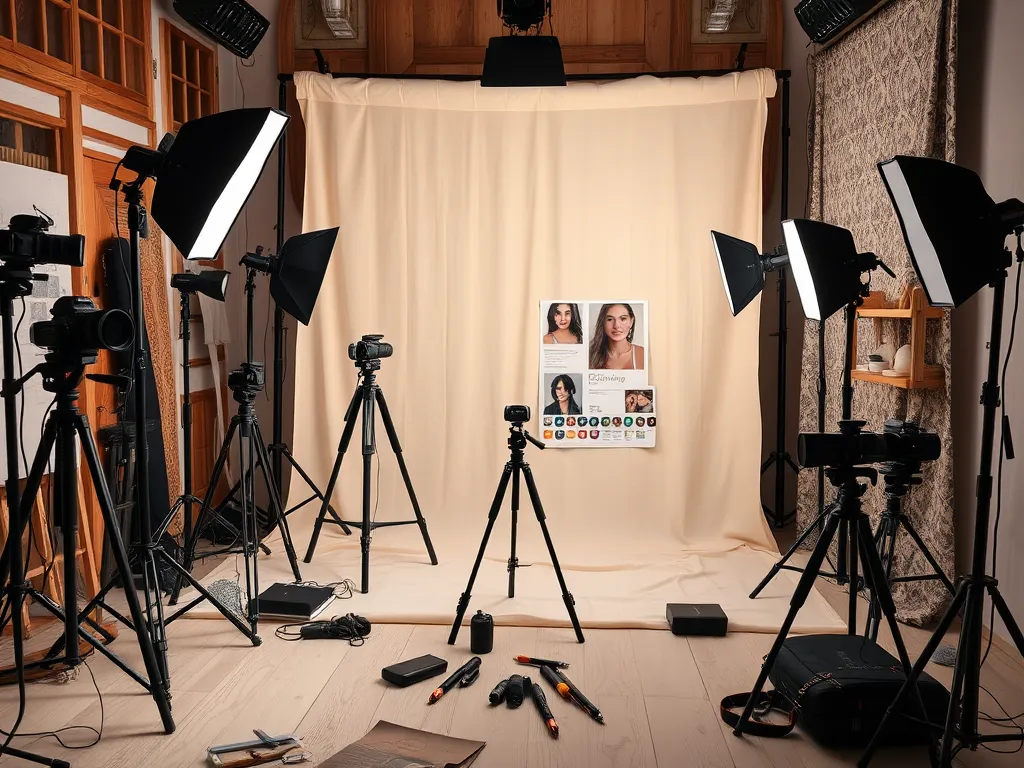Mastering Portrait Photography Techniques for Capturing Personality

Techniques for Capturing Personality in Portrait Photography
Portrait photography is more than just a snapshot; it's an art form that seeks to capture the essence of a person. Techniques for capturing personality in portrait photography involve an intricate blend of understanding light, effective posing, engaging with subjects, thoughtful composition, and refined post-processing. Each of these aspects plays a crucial role in revealing the unique character and emotions of the subject, making the portrait not just a picture, but a story that resonates with viewers.
To effectively showcase personality in portrait photography, one must master the use of light. The way light interacts with a subject can dramatically alter the mood and feel of the photographs. Techniques for capturing personality in portrait photography begin with harnessing the power of both natural and artificial light. Understanding the nuances of these light sources can help photographers create portraits that are not only visually appealing but also deeply expressive of the subject's nature.
Mastering the art of Portrait Photography enhances your ability to capture the essence of your subjects.
In addition to light, posing techniques are pivotal in portraying personality. Effective posing can either enhance or obscure the subject's true essence. Therefore, utilizing guidelines for natural and relaxed poses is essential. By allowing the subject's body language to convey emotions and by choosing between candid versus directed posing styles, photographers can delve deeper into the subjects’ personalities, capturing authentic moments that speak volumes.
Engagement and connection with subjects are vital in portrait photography. Building rapport helps to break down barriers, allowing for genuine expressions to surface. Techniques for capturing personality in portrait photography include encouraging natural interactions, whether through conversation or shared activities, and incorporating props that reflect the subject's interests and character, further enhancing the portrayal of their personality.
Finally, composition and framing in portraits play a significant role in personality capture. Thoughtful arrangements that adhere to principles like the rule of thirds and using leading lines can draw viewers’ focus onto the subject. Additionally, balancing the background with the subject presence ensures that the story being told is clear and impactful. Coupled with post-processing techniques that enhance mood and emotion, photographers can refine their portraits to reflect the true essence of their subjects, making each image a captivating representation of personality.
Understanding Light in Portrait Photography
One of the foundational elements in portrait photography is the mastery of light, which can set the tone and mood of the images. Photographers often wrestle with the choice between natural light and artificial light techniques. Natural light tends to provide a soft, flattering look that can bring out the best in the subject when used correctly. Conversely, artificial light can be manipulated more readily to achieve specific effects or dramatization, allowing for creative expression beyond the limitations of available light.
Utilizing the golden hour, which occurs shortly after sunrise or right before sunset, can be particularly beneficial in personality capture. The warm hues and soft shadows of this time provide an enchanting atmosphere, enhancing the natural texture of the subject's skin while adding a flattering glow. Capturing subjects during these hours not only elevates the aesthetic appeal but also allows for candid moments as they generally feel more relaxed in the gentle ambiance of natural lighting.
Managing shadows during a portrait session is another technique that adds depth and character to images. Shadows can sculpt features, create a sense of three-dimensionality, and emphasize the personality traits of the subject. Understanding how to position subjects in relation to light sources and how to manipulate shadow play can lead to portraits that are rich in character and emotion, lending authenticity to the portrayal.
Effective Posing Techniques
Effective posing techniques are crucial for evoking the personality of the subject in portrait photography. Guidelines for achieving natural and relaxed poses often include encouraging subjects to shift their weight from one leg to the other or to engage their hands in a way that feels comfortable. This subconscious movement can create a sense of ease that translates into the final image, portraying a more authentic representation of the subject's personality.
Beyond just pose, body language can significantly convey emotion, serving as a powerful tool in the photographer's arsenal. Subtle changes in posture, facial expressions, and hand placement tell stories about who the subject is at their core. Therefore, taking careful measures to ensure that subjects embody a sense of openness or introspection through their body language can lead to portraits that radiate personality.
Another consideration within posing techniques is the distinction between candid and directed posing styles. While candid moments often yield spontaneous expressions and genuine interactions, directed poses may allow the photographer to guide the subject into stances that highlight personal traits. Striking a balance between these methods can make for well-rounded portraits that encapsulate the subject's personality thoroughly.
Engagement and Connection with Subjects
Creating an engagement and connection with subjects is a critical component in capturing their true personality. Building rapport fosters a trustworthy relationship that allows subjects to be themselves. Techniques for capturing personality in portrait photography include establishing a comfortable atmosphere, where subjects feel safe to express themselves and reveal their genuine emotions, resulting in strikingly authentic portraits.
Encouraging natural interactions during the shoot is another technique that brings forth organic expressions. Engaging in light-hearted conversations or shared activities can break the ice, prompting subjects to display their true selves. These interactions not only help the photographer capture candid moments but also enhance the overall experience for the subject, creating lasting memories framed in the form of mesmerizing portraits.
Incorporating props can also enhance personality portrayal in portrait photography. Props that are meaningful to the subject—such as musical instruments, books, or items that reflect personal hobbies—help tell a story about who they are. By allowing subjects to interact with props during the shoot, photographers can unveil and emphasize the unique aspects of their personality that matter most to them.
Composition and Framing in Portraits
The composition and framing of portraits significantly impact how personality is conveyed. One essential rule is the rule of thirds, which suggests that placing the subject off-center can create a more dynamic composition. This technique guides the viewer’s eye towards the subject while allowing for an engaging background that contributes to the visual narrative of personality.
Additionally, utilizing leading lines can effectively draw focus towards the subject, emphasizing their presence within the portrait. Whether it's a path or architectural elements in the backdrop, these lines guide the viewer's eye and serve to enhance the connection to the subject, subtlety embedding their personality into the environment of the image.
Balancing the background and subject presence is crucial in composition. A cluttered background can distract from the subject's personality, while a thoughtfully chosen environment can enhance the story being told. Ensuring that neither overpowers the other allows the personality of the subject to shine through, forging a meaningful connection between the image and the viewer.
Post-Processing Techniques for Enhancing Personality
Post-processing techniques play an essential role in refining portraits to enhance mood and emotion. Editing tools can be utilized to adjust exposure, contrast, and sharpness, all contributing to a final product that encapsulates the personality of the subject. Subtle adjustments in highlights and shadows can emphasize the unique traits that make each individual who they are.
Color grading is another post-processing technique that can dramatically influence viewer perception and emotional response. The warmth or coolness of colors can evoke specific feelings, guiding the audience to interpret the subject's personality from a visual standpoint. By strategically utilizing color, photographers can enhance the emotional depth of their portraits, making them resonate on a more profound level.
Lastly, careful retouching that maintains personality integrity is crucial. While enhancements can improve the overall aesthetics, it’s vital not to overly alter features that distract from the subject's natural appearance. Preserving the uniqueness of each face ensures that the final portrait remains a genuine representation of the individual's personality, allowing their true self to shine through.
